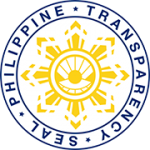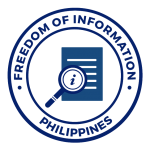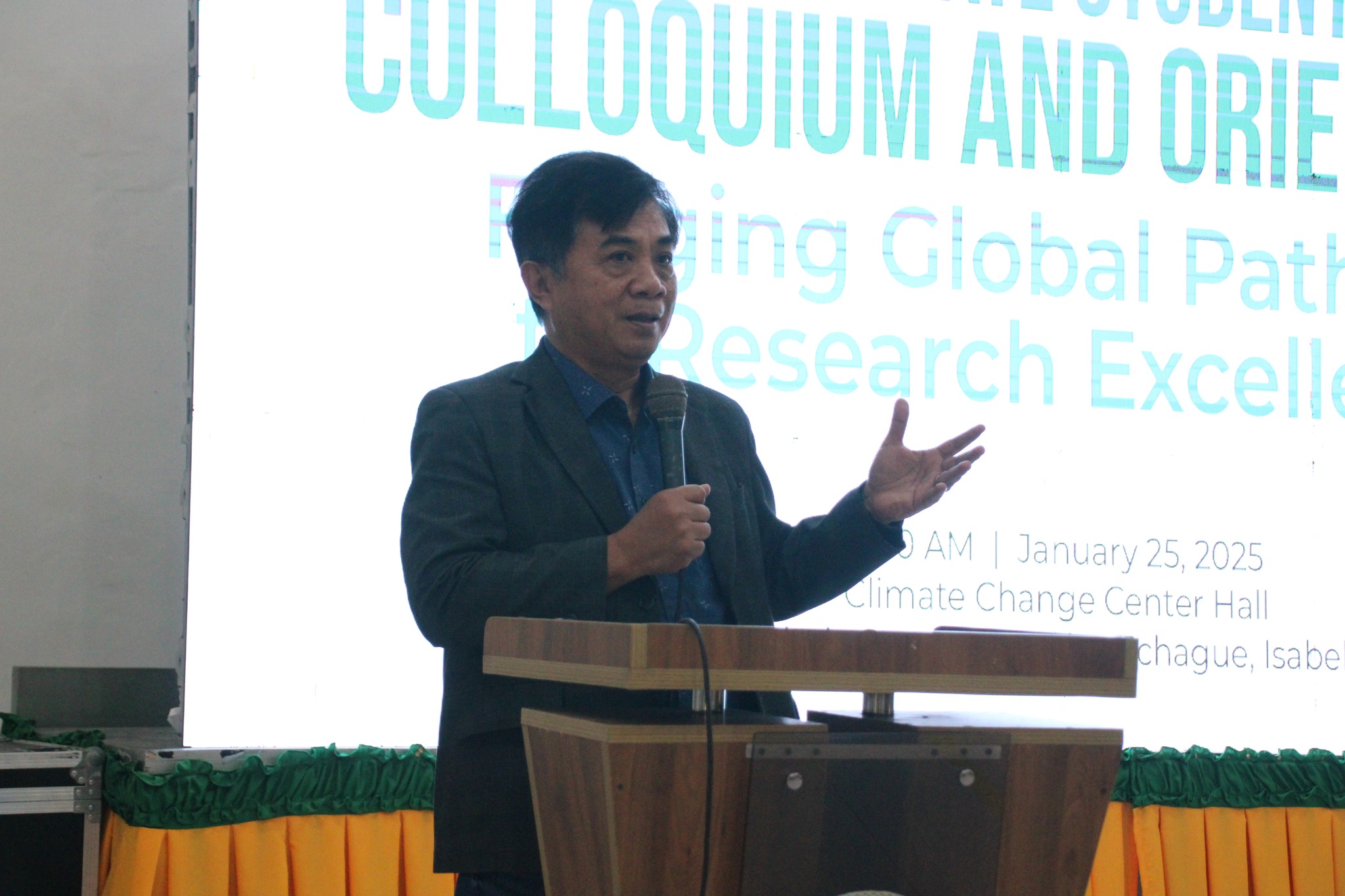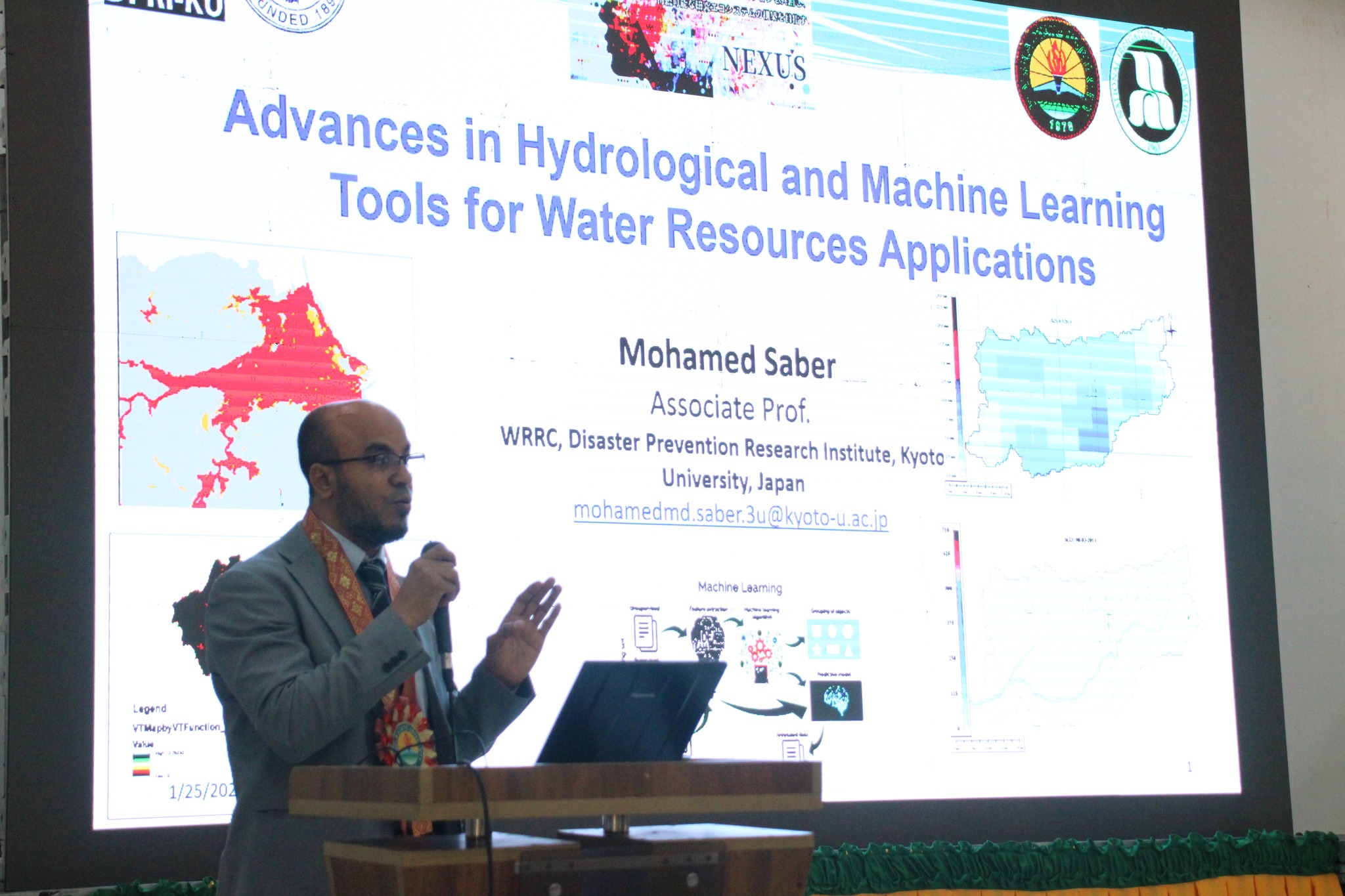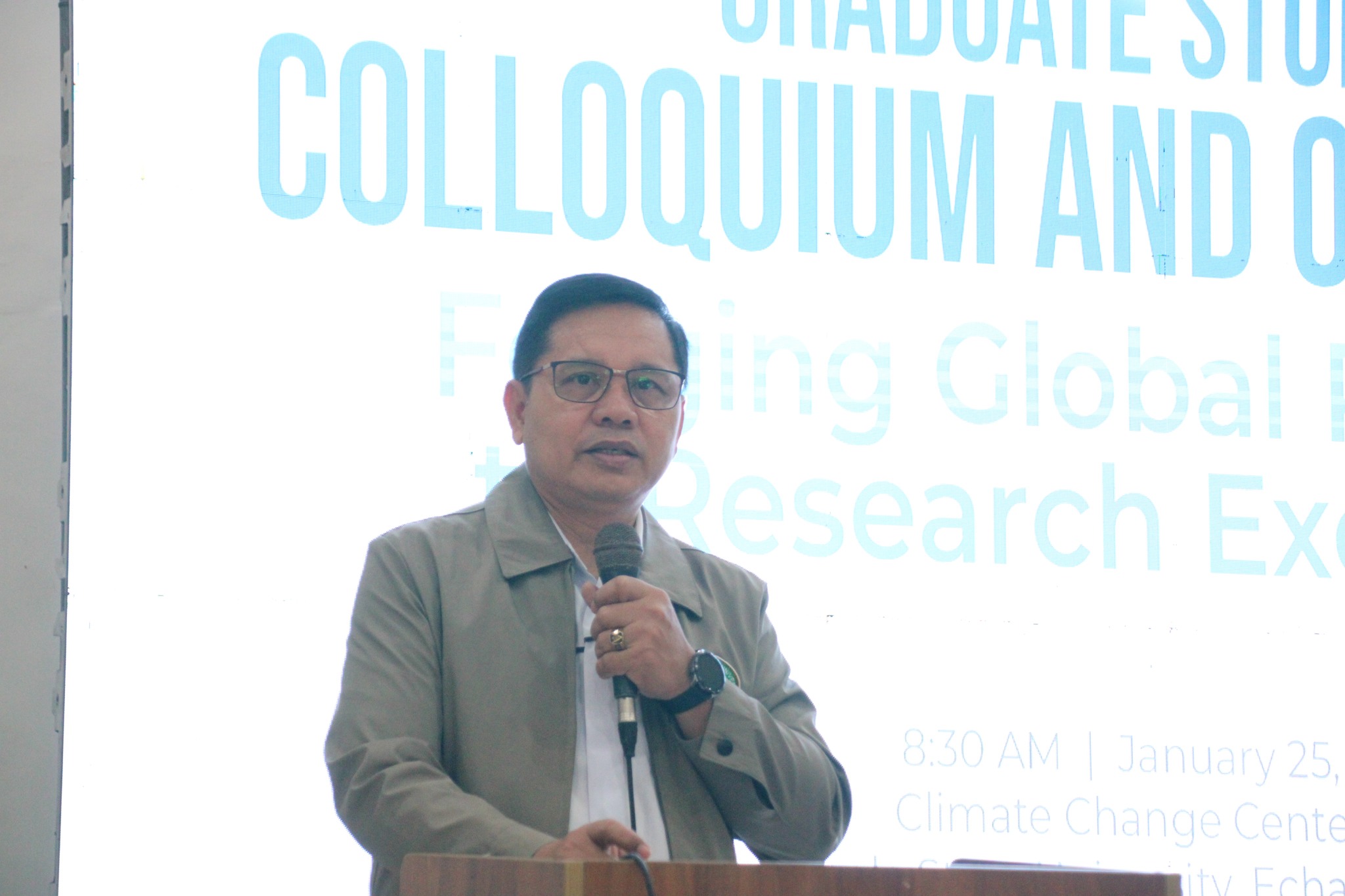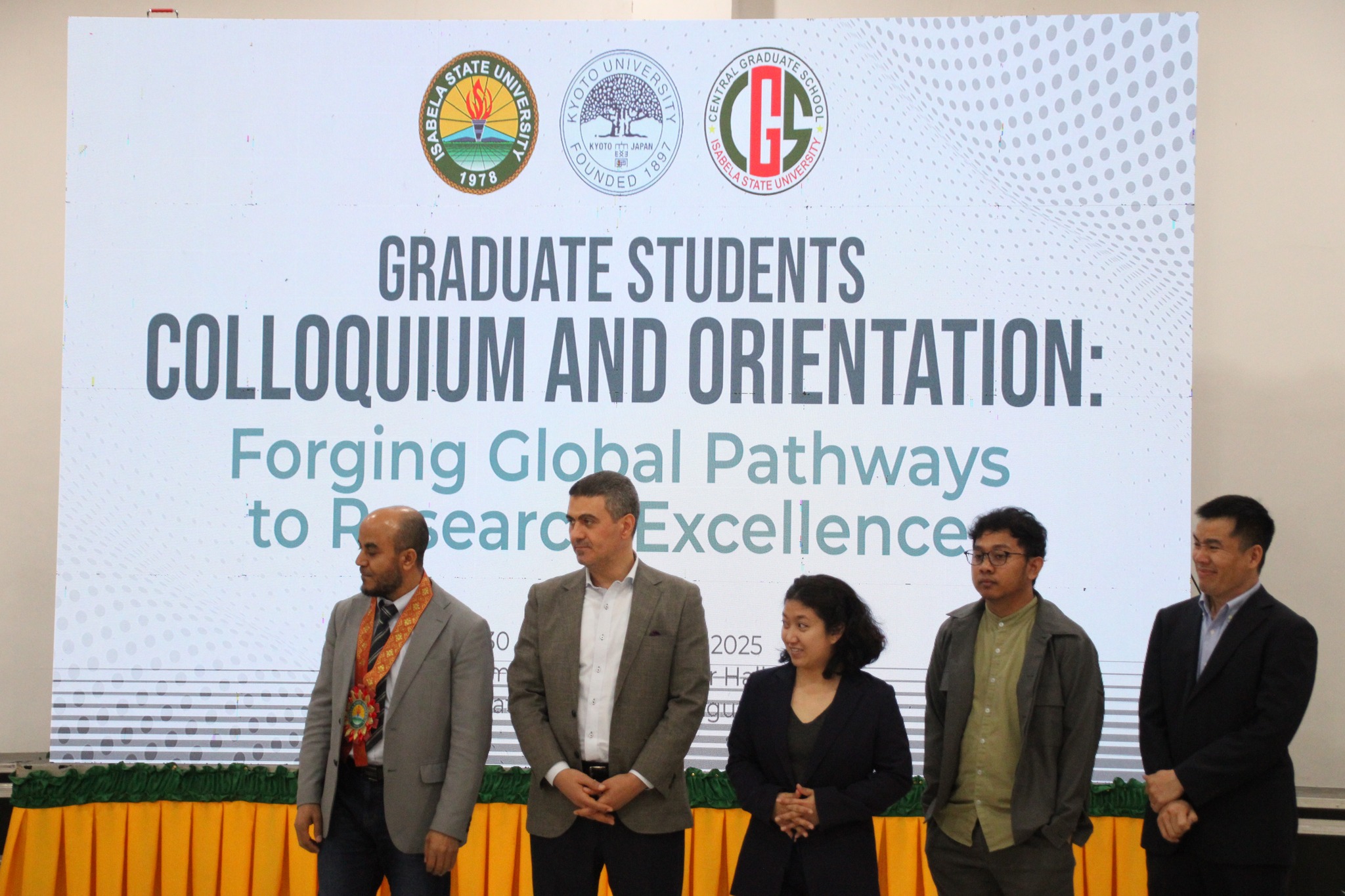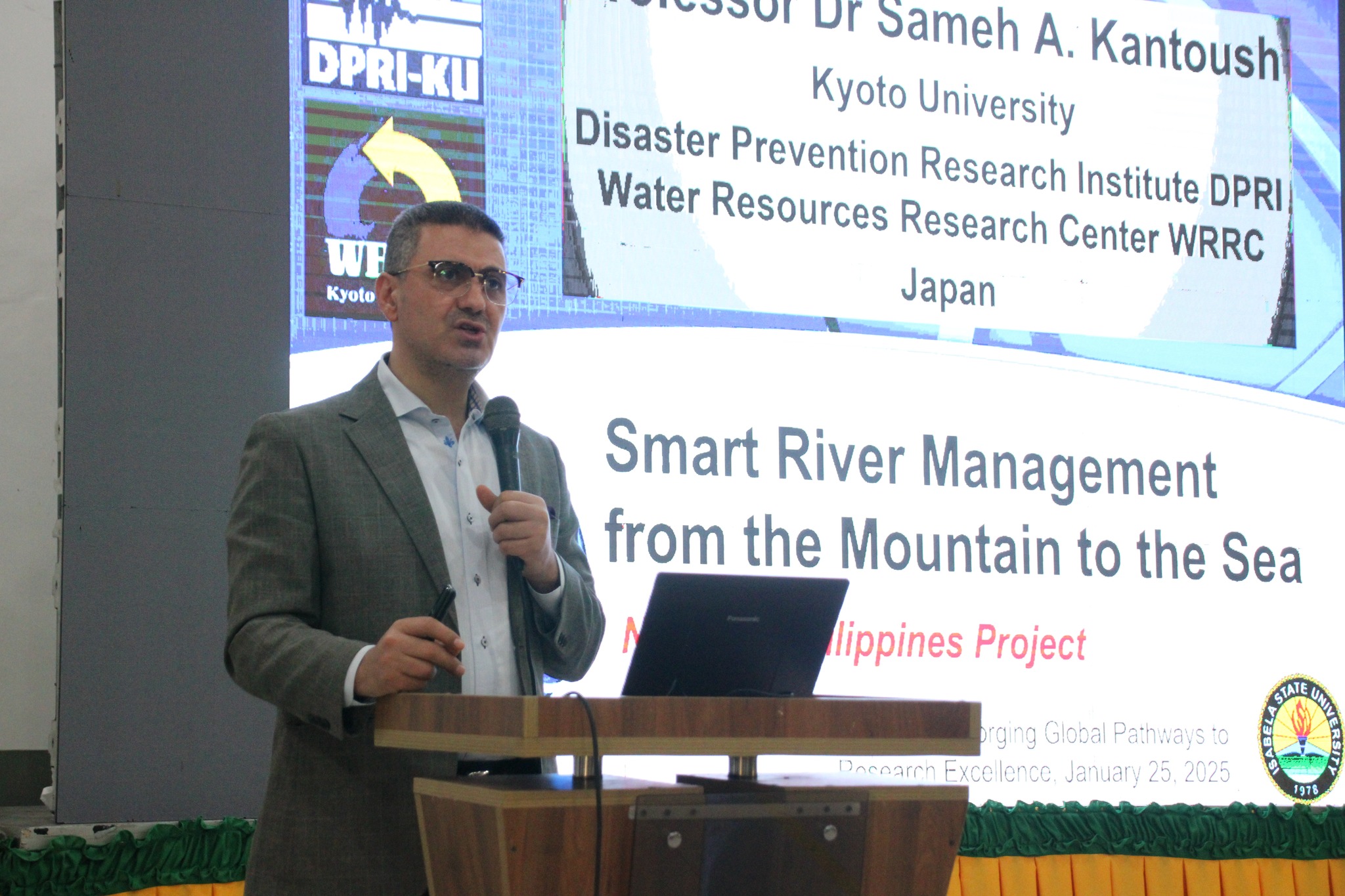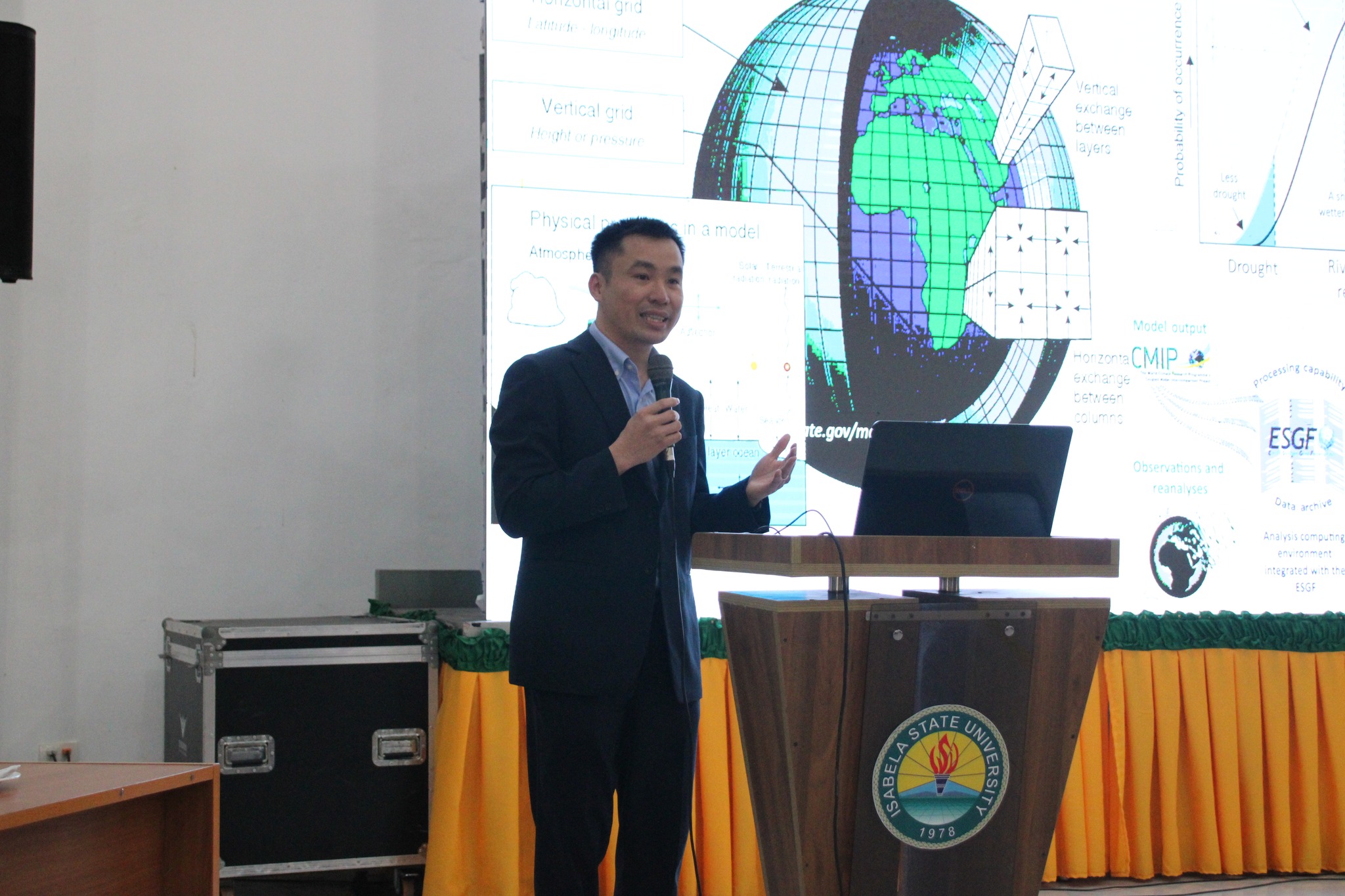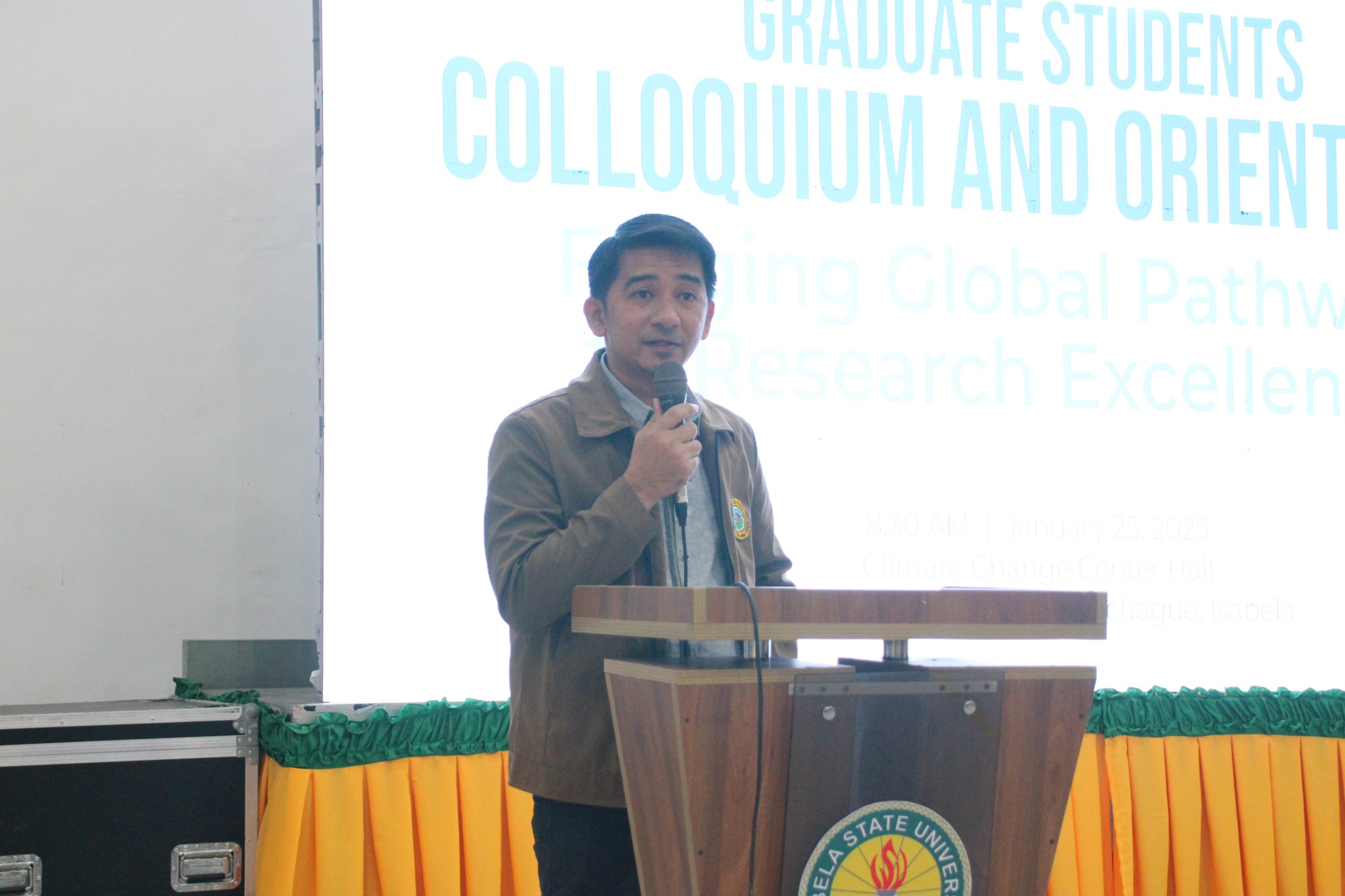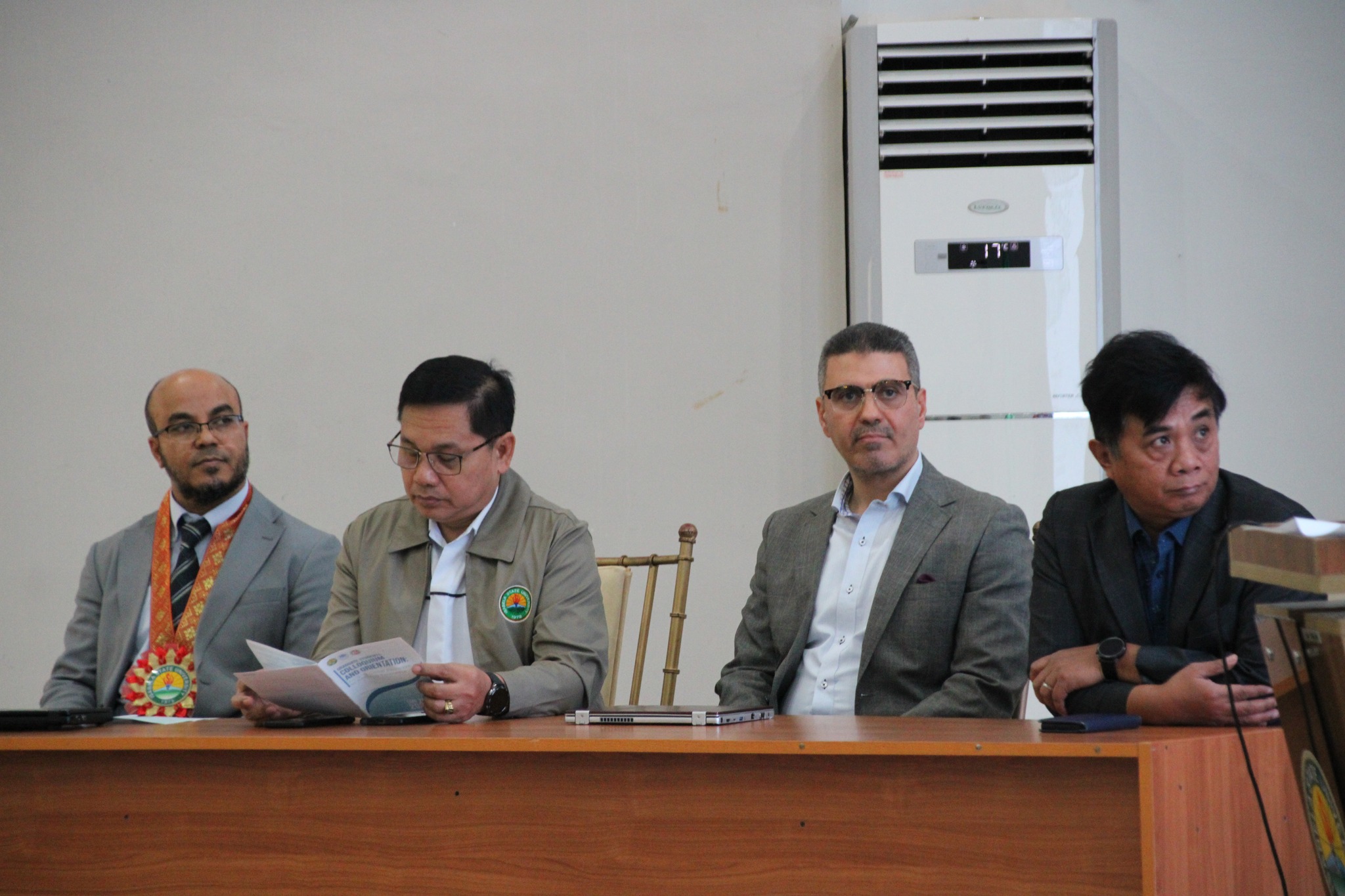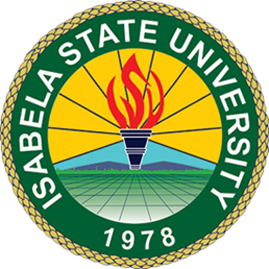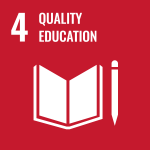
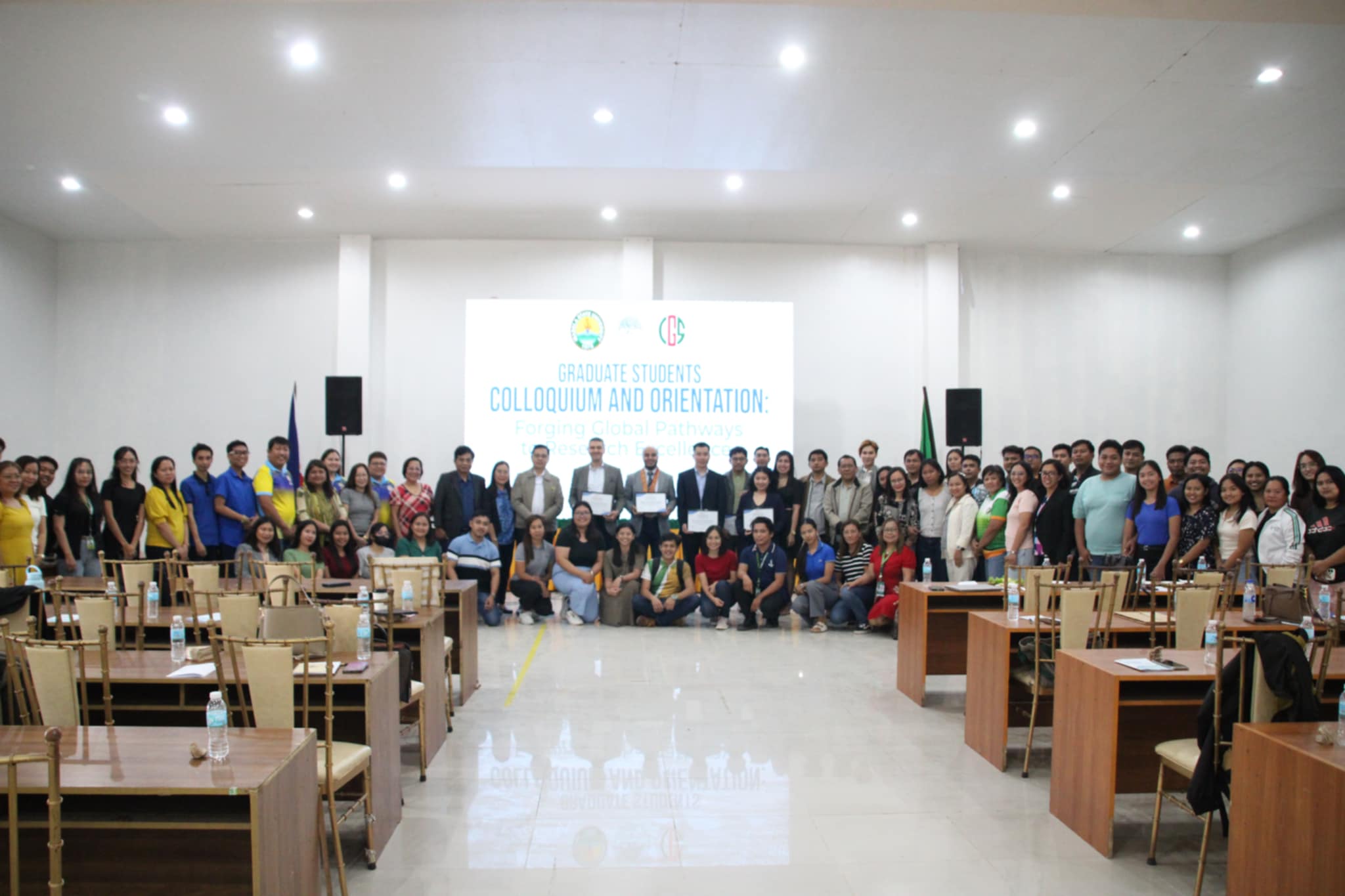
Images credits: River Basins for Sustainable Development
The Isabela State University (ISU) constantly creates numerous academic and research opportunities for its students to be on par with global standards, as it organized a graduate students’ colloquium and orientation to forge global pathways toward research excellence on January 25, 2025, at the Climate Change R&D Support Facility. This technical session came to fruition through the strong nexus between ISU and Kyoto University, Japan, specifically the R&D initiatives of Prof. Ricmar P. Aquino, University President; Prof. Orlando F. Balderama, Vice President for Research and Development, Extension, and Training; and Prof. Sameh Ahmed Kantoush, Principal Investigator of the Japan-Philippine Nexus Program on Water Security (Japanese team), as incorporators and members of the Board of Trustees of the International Organization on Climate Change Adaptation and Disaster Risk Reduction Management Inc. (IOCCADRRM).
The immense support of the Central Graduate School (CGS), headed by Prof. Helena Florendo, also played a crucial role in cultivating a culture of academic excellence, international collaboration, and innovation among graduate students. In her welcome remarks, Prof. Florendo, CGS Dean, emphasized, “This activity will provide us with a platform for sharing knowledge, new discoveries, and insights obtained from research.” Meanwhile, Prof. Aquino expressed delight in sharing ISU’s numerous R&D projects, which have benefited not only the University but also the entire Cagayan Valley and are now expanding to other dams in the Philippines, including the Angat and Cagayan de Oro River Basins, thereby creating a significant impact on Filipinos.
Afterward, Prof. Jeoffrey Lloyd R. Bareng, Project Leader of the Japan-Philippine Nexus Program (Philippine team) and University R&D Director, introduced the esteemed international partners from the Disaster Prevention Research Institute (DPRI) of Kyoto University, Japan, and acknowledged all the participants of the colloquium. Furthermore, Prof. Balderama elucidated the integration of an academic research continuum for graduate education. He highlighted in his speech, “Because ISU is a research university, we believe that the most important asset of the university is its ability to produce or generate science-based knowledge products that will benefit our stakeholders and enhance its place in the international arena.” On the other hand, Prof. Kantoush gave an overview of the Japan-Philippine Nexus Program as a collaborative research project between Kyoto University and ISU. He discussed hydro hazards in high-risk geographical areas caused by climate extremes and human impacts, particularly smart and integrated river basin management, the design and upgrading of hydrological measurements, sediment replenishment, hydrological, environmental, and morphological sensors and platforms, necessary inputs for effective early warning systems, and the accomplishments of IOCCADRRM.
In addition, Dr. Mohamed Saber, an Associate Professor from Kyoto University, presented Advances in Hydrological and Machine Learning Tools for Water Resources Applications. He compared hydrological models and machine learning algorithms, explained the applications of hydrological models for flood risk assessment, and discussed the fundamentals and applications of machine learning. Meanwhile, Dr. Nguyen Quang Binh, a Professor at The University of Danang – University of Science and Technology, explicated the Role of Advanced Technologies in Sustainable Water Resources Management. He stressed the challenges of optimal dam operation under the impact of climate change and sedimentation, the process of improving rainfall and inflow prediction, case studies in Japan and Vietnam, and the creation of a decision support system.
Moreover, Engr. Jerome Gacu, an Associate Professor at Romblon State University and a PhD student at Kyoto University, presented a Comprehensive Review of Sediment Management and Technologies in the Philippines. He expounded on reservoir sedimentation in the Magat and Cagayan River Basins, watershed management, and sediment management strategies. Additionally, Ms. Sarah Alma Bentir, a faculty member of Bulacan State University and a PhD student at Kyoto University, delineated the Application of Water Indices in Remote Sensing for Monitoring Water Resources and Environmental Change: A Case in Angat Dam. She illustrated common data formats, sample implementations using machine learning, water index computation, and the process of monitoring water resources and environmental change.
In the afternoon session, Dr. Jennelyn L. Raymundo, Editor-in-Chief of the University Research Journals, presented the aims and scope of the complementary journals of ISU Linker and oriented graduate students on the research evaluation process. The open forum followed the series of presentations and revolved around the journal’s indexing and publication as a graduation requirement. Afterward, graduate students from all campuses of the University commenced their research presentations.
Lastly, Dr. Florendo concluded the event by expressing her appreciation for the active participation of the attendees, hoping that the colloquium provided them with an avenue to navigate their research journey as they complete their respective academic degrees. With this kind of learning platform that the University provides, its graduate students are empowered to navigate and contribute meaningfully to the global academic and professional landscape, thereby setting the stage for ISU to raise its banner as a leading research university in the ASEAN region.
Images credits: River Basins for Sustainable Development

